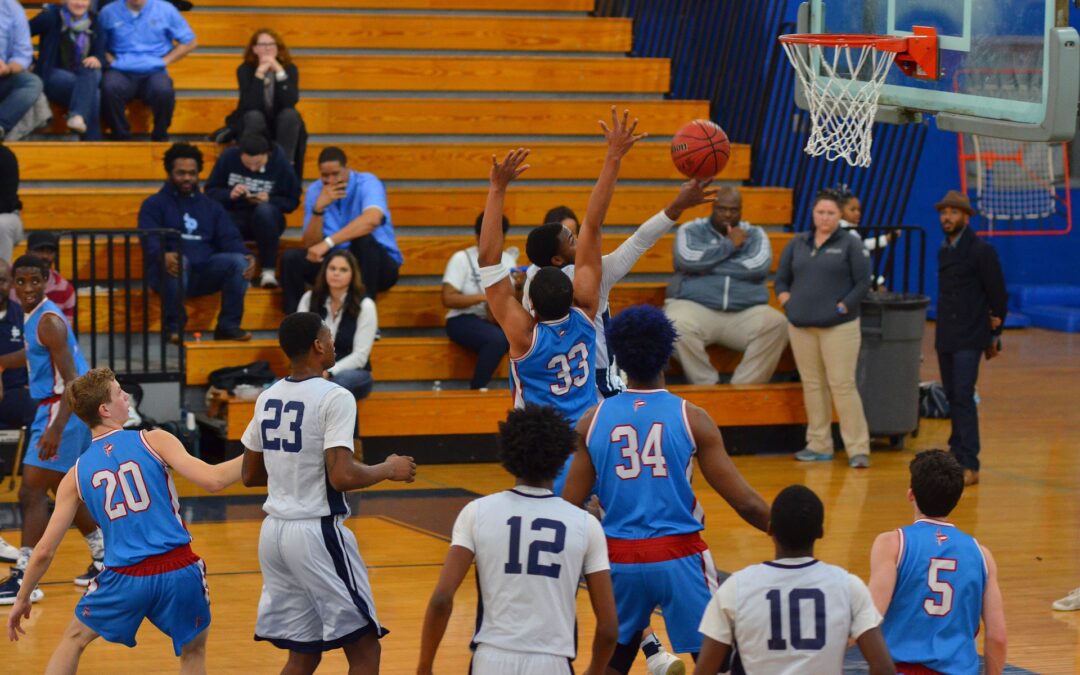The “SHRed injuries basketball” neuromuscular training warm-up program reduces ankle and knee injury rates by 36% in youth basketball.
Emery CA, Owoeye OBA, Räisänen AM, Befus K, Hubkarao T, Palacios-Derflingher L, Pasanen K. J Orthop Sports Phys Ther. 2022 Jan;52(1):40-48. doi: 10.2519/jospt.2022.10959. PMID: 34972488.
https://pubmed.ncbi.nlm.nih.gov/34972488/
Take-Home Message
The 10-minute Surveillance in High school and community sport to Reduce (SHRed) Injuries Basketball warm-up program reduced the rate of ankle and knee injuries in youth basketball players by 36%.
Background
Neuromuscular training programs reduce the number of injuries in various youth sports. However, we could use more information on how these programs perform in youth basketball players in a community setting with and without supervision from trained research staff.
Study Goal
Emery and colleagues assessed the effectiveness of the SHRed Injuries Basketball program in youth basketball athletes. The study also evaluated the program’s effectiveness when administered by trained coaches with or without supervision by the research team.
Methods
The researchers recruited adolescent basketball players and coaches registered with Alberta High School Athletics and the Calgary Minor Basketball Association. The study lasted two seasons. In season 1, no intervention was offered. Team designates (e.g., athletic trainer, coach, manager) recorded all injuries and player participation in practices or games. The researchers used data from the first season as a reference for data from the following season. In season 2, coaches received preseason training on administering the SHRed Injuries Basketball program. The researchers then randomized teams into either a “supervised” group (17 teams) or an “unsupervised” group (14 teams). In the supervised group, research staff visited weekly practices to help coaches with the SHRed program and facilitate proper technique and progression of the exercises. During the intervention season, teams performed the SHRed Injuries Basketball program (13 aerobic, agility, strength, or balance exercises) at least three times per week for 10 minutes.
Results
Overall, the SHRed Injuries Basketball program lowered the rate of knee and ankle injuries by ~36%, regardless of supervision (supervised: 36% unsupervised: 38%) compared to the season before. The unsupervised group completed 75% of the total SHRed sessions, similar to the supervised group (80%).
Viewpoints
Overall, the data from this study suggests the SHRed Injuries Basketball program is effective in reducing knee and ankle injuries. Furthermore, the SHRed Injuries Basketball program can be effective when led by a trained coach without supervision from a member of the research team. These findings highlight that injury prevention warm-up programs don’t need to be time-consuming. This 10-minute program was effective. Furthermore, coaches who complete a workshop can effectively deliver these programs.
Clinical Implications
We need to do more to educate coaches, parents, and players that programs like the 10-minute SHRed Injuries Basketball program can be easily/effectively implemented and protect against knee and ankle injuries in youth basketball players.
Questions for Discussion
What neuromuscular training programs are you currently using? What barriers to implementation have you encountered?
Written by: Kyle Harris
Reviewed by: Jeffrey Driban
Related Posts
Another Feather in the Cap of the FIFA 11+ Injury Prevention Program
FIFA 11+ Reduces the Risk of Injuries Amongst Soccer Players
FIFA 11 … (But Really FIFA 11 +) Programs Are Effective in Reducing Football (Soccer) Injuries
High School FIFA 11+ Implementation Had Poor Compliance and No Injury Reduction


